Experience the beauty of traditional Korean culture by renting a Hanbok during your trip to Seoul. Hanboks are traditional Korean clothing that are often worn on special occasions such as weddings, festivals, and ceremonies.
The intricate designs and vibrant colors of Hanboks make them a must-have for when you visit Seoul and want to take stunning photographs. In this guide, I will provide you with a list of the best Hanbok rental shops in Seoul, complete with pricing, sizes, and styles available.
Visiting historical sites such as Gyeongbokgung Palace or participating in cultural events will be even more special when wearing a traditional Hanbok. Renting a Hanbok is a great way to immerse yourself in the local culture and learn more about South Korean history.
Make sure to also check out where to stay in Seoul, all the best things to do in Seoul and our complete 5 day in Seoul itinerary.
Table of Contents
- What is a Hanbok
- Where to rent a Hanbok in Seoul
- Hanbok That Day
- Hanboknam Gyeongbokgung Store
- Gigibebe Hanbok
- Dorothy Hanbok
- N Seoul Tower Hanbok Rentals
- How much is a Hanbok to rent
- How to wear a Hanbok?
- What do you wear under a hanbok?
- Beautiful sights for Hanbok photo shoots
- Is it okay for foreigners to wear hanbok?
What is a Hanbok
A Hanbok is a traditional Korean garment that has been worn for centuries by both men and women on special occasions such as weddings, festivals, and ceremonies, making them a symbol of Korean heritage and tradition.
The term Hanbok is a combination of two Korean words, “Han” meaning “Korean” and “bok” meaning “clothes.” The Hanbok has a distinct silhouette, featuring a high waistline and a full skirt for women and long, wide-legged pants for men.
One of the most recognizable features of a Hanbok is the “jeogori,” a blouse-like top that is worn by both men and women. The jeogori has a V-neckline and short sleeves.
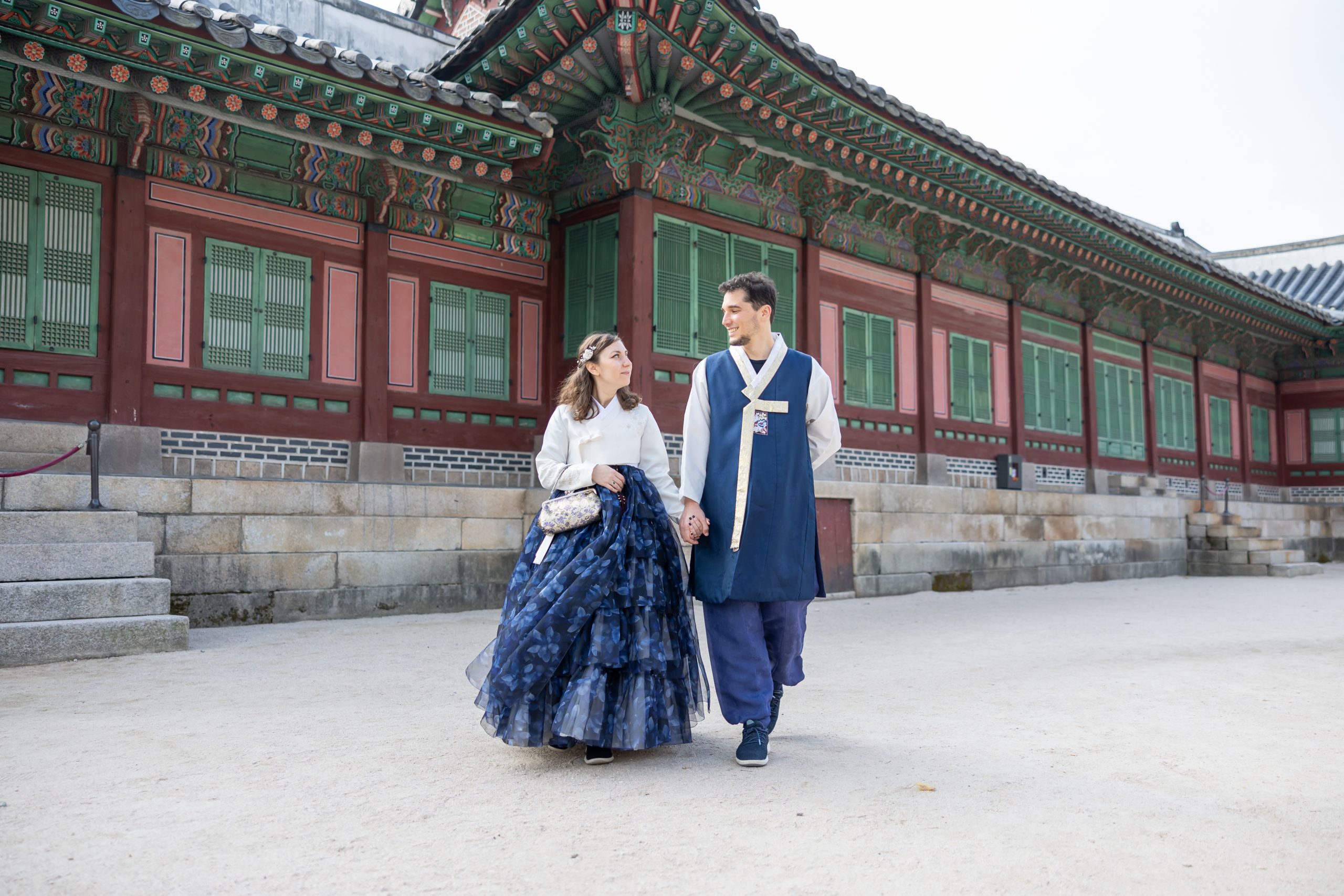
Women wear a full skirt called a “chima”. The chima has a high waistline that is fastened with a ribbon, and it falls to the ground in a full, flowing shape.
Men wear, long, wide-legged pants called “baji”. The baji are typically made of a lightweight fabric and are worn with a long, flowing “durumagi” coat.
Hanboks are typically made of silk or other high-quality fabrics and are adorned with intricate embroidery, lace, and other decorative elements. The colors and designs used in a Hanbok can vary depending on the occasion for which it is worn, as well as the wearer’s age, social status, and location.
Today, Hanbok rentals and sales are a popular way for tourists to experience this traditional culture and create lasting memories while visiting the country.
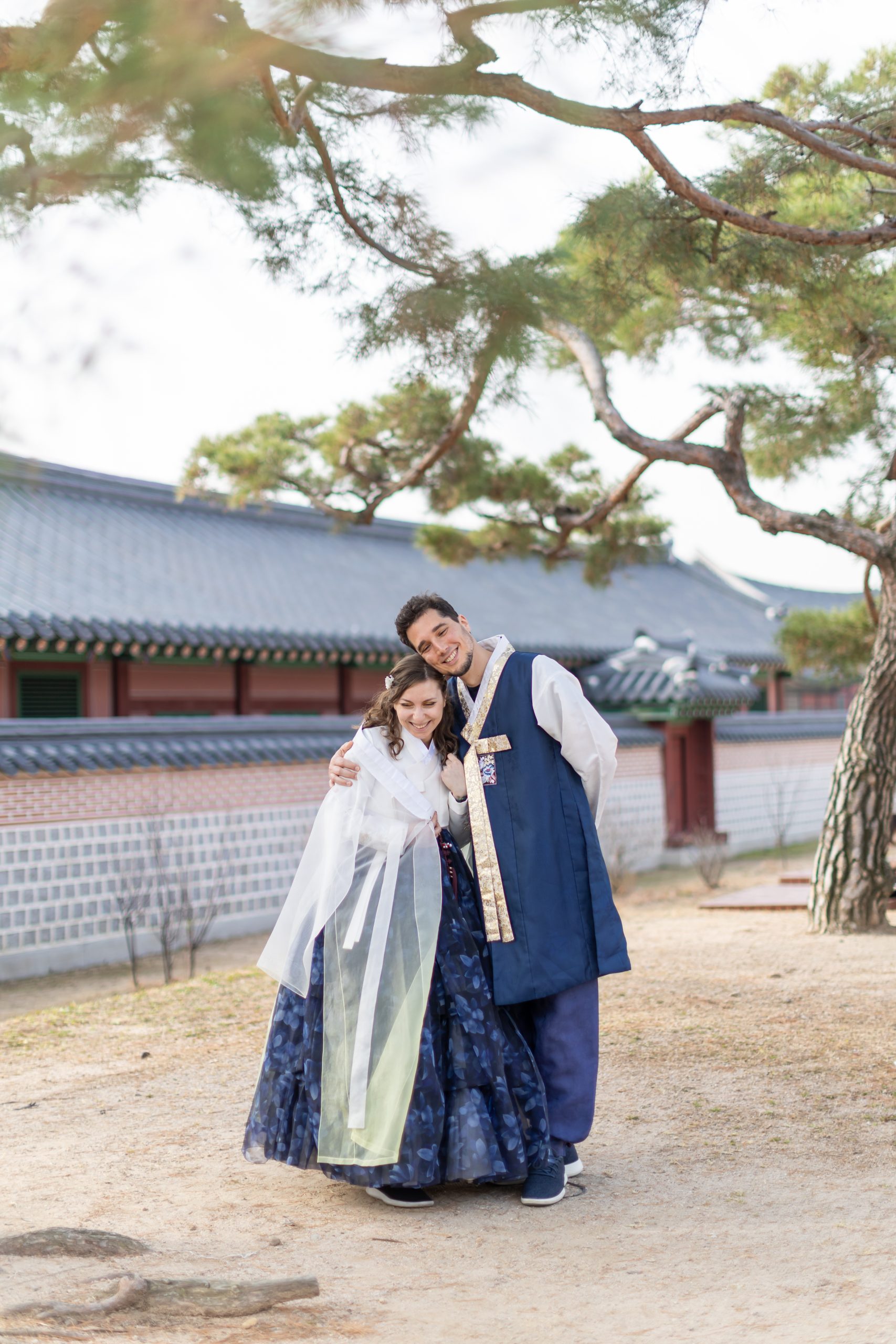
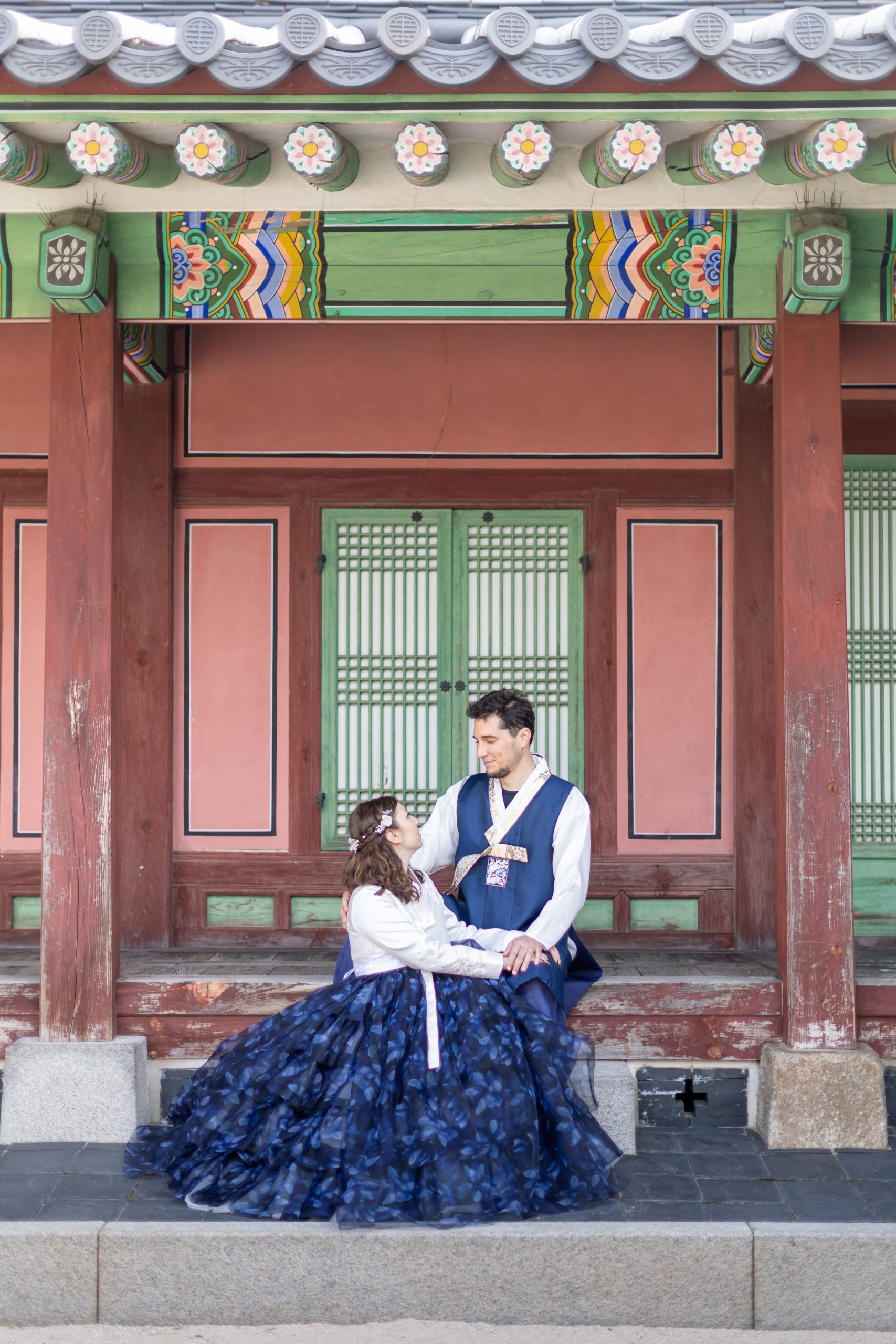
Where to rent a Hanbok in Seoul
There are many places in Seoul where you can rent a Hanbok. The important thing to remember is that if you wear a Korean hanbok, entrance to some palaces is usually free or included in the price of your experience.
Hanbok That Day
Book your experience with Hanbok That Day and pick between several options. Rent hanbok for indoor or outdoor photoshoot experience or just enjoy 3 or 4 hours rental and explore Seoul on your own. After much deliberation and research, this is the company we went with. We loved our experience a lot. The photographer was kind and took over 200 photos of us at the Gyeongbokgung Palace. Book your experience with Hanbok That Day.
Hanboknam Gyeongbokgung Store
Dress in traditional Korean clothing worn during celebrations and get your hair done in a classic braid or bun. Here you can pick from over 500 selections of exquisitely made hanboks and rent accessories to complete your look. With this shop, you can only get your photoshoot experience in their studio and not outdoors. Book your experience with Hanboknam Gyeongbokgung Store.
Gigibebe Hanbok
Enjoy Hanbok Experience with free Hairstyling and coffee. Prices start from as little as £7 for renting the traditional clothing for 1.5 hours. If you wear your Hanbok and go to Gyeongbok Palace, you get your admission for free. This shop doesn’t provide any photo shooting experience. Book your experience with Gigibebe Hanbok.
Dorothy Hanbok
This shop is located close to the Changdeok Palace. You can pick from a wide variety of designs and go for Korean traditional dress or for a themed/premium hanbok rental. This shop specialises on rentals only and does not provide photo shooting experiences. Book your experience with Dorothy Hanbok.
N Seoul Tower Hanbok Rentals
With this rental you get access to the N Seoul tower for free. Basic accessories are included and on site you can purchase a photoshoot experience as well. Hanboks here are in the royal style which makes them look exceptional and unique. Book your experience with N Seoul Tower Hanbok Rentals.
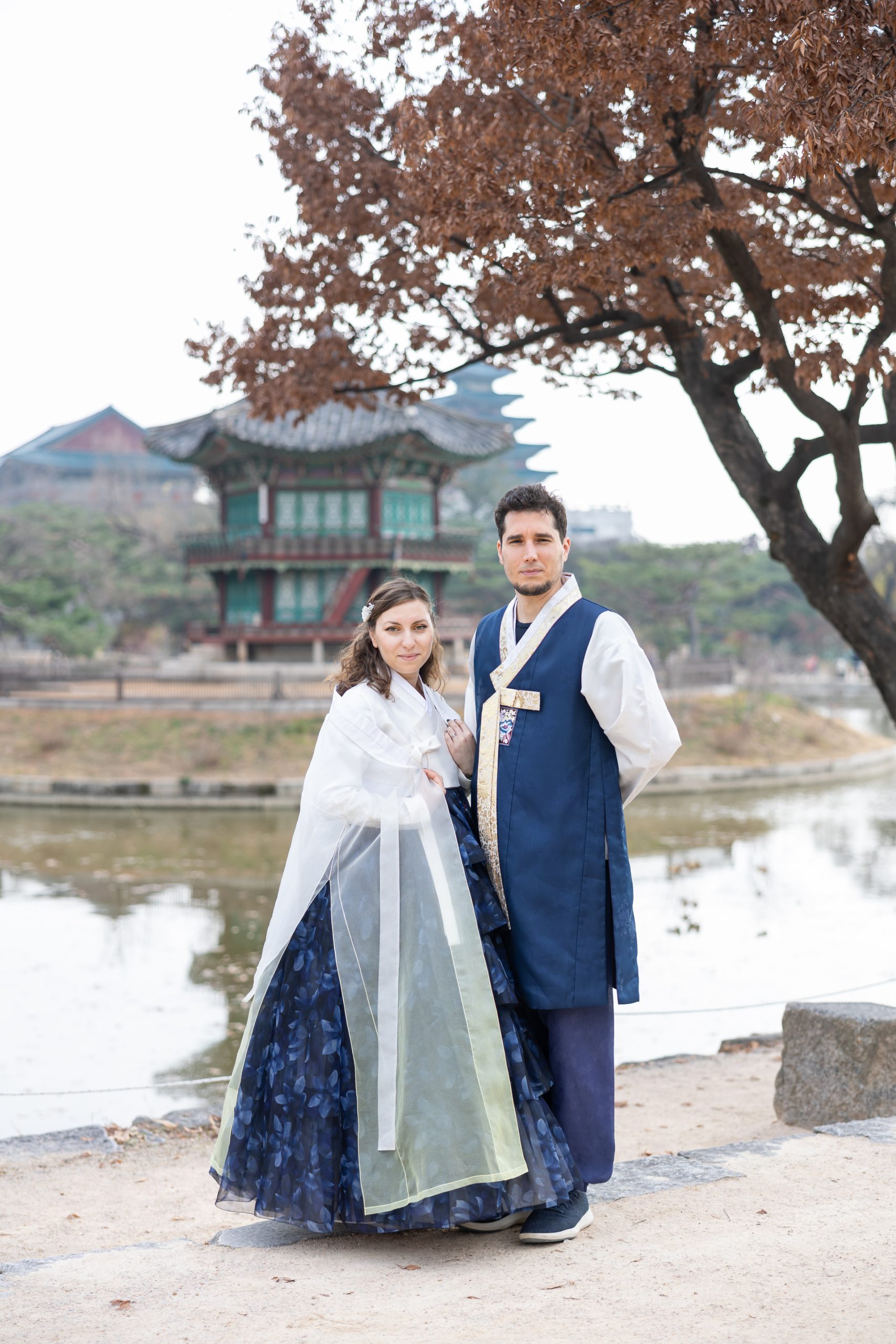
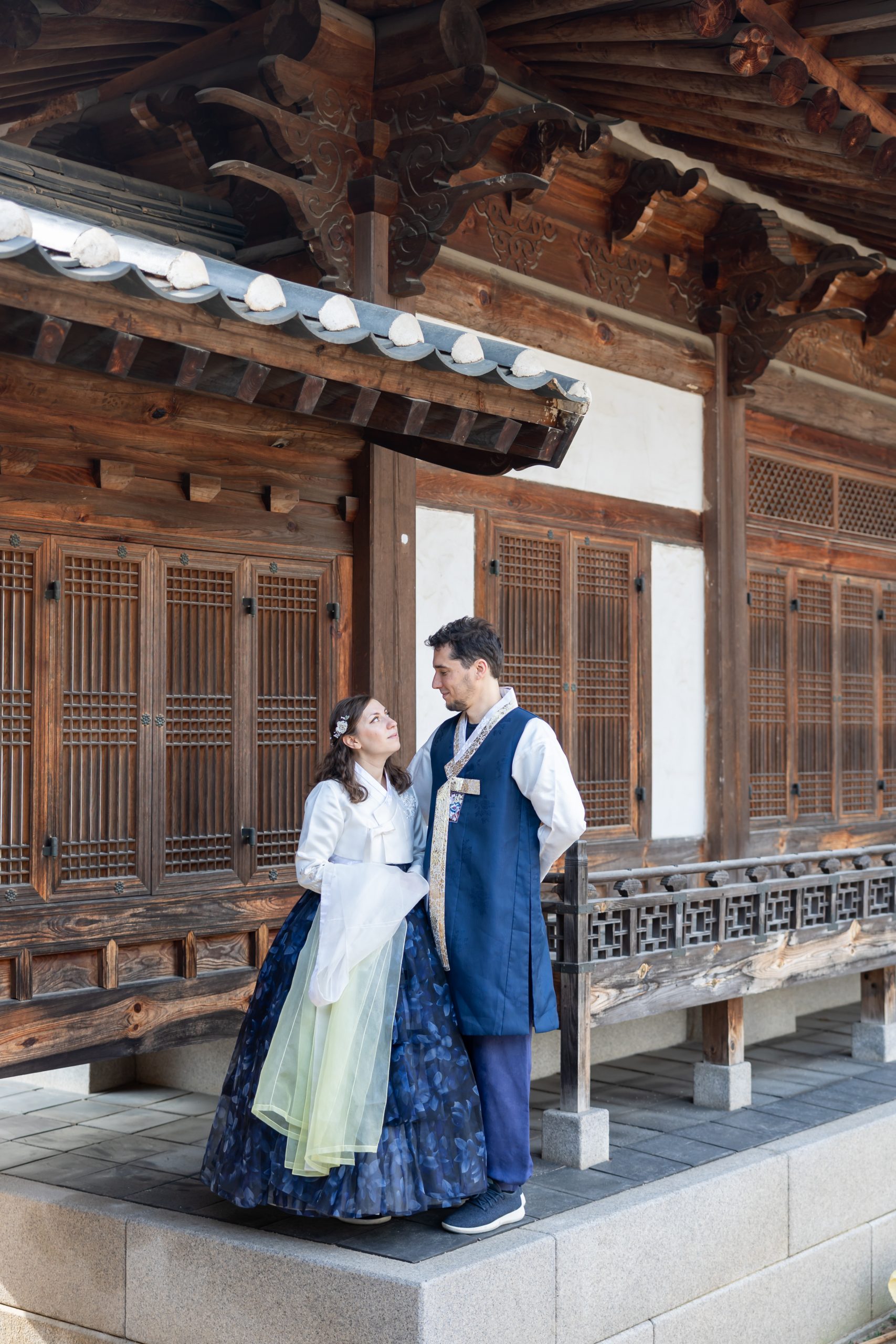
How much is a Hanbok to rent
Expect to pay around 30,000 to 50,000 KRW (South Korean Won) per day, which converts to 25-40 USD. The cost of renting a Hanbok varies depending on the type of Hanbok, the duration of the rental, and the location of the rental shop.
For a basic Hanbok you can pay as little as $7 for a couple of hours rental. High quality and special Hanboks come with a higher price tag. Some rental shops offer add-ons like Korean hairstyling, photography, and makeup services.
Please remember that Hanbok rental agencies will charge you a fee if you are late returning your Hanbok or you return it damaged.
In our case, we paid around $130 for the both of us, and our experience included premium Hanbok rentals for a whole day, with hairstyling and accessories as well as an outdoor photo shoot at the Gyeongbokgung Palace. We received more than 300 photos, beautifully done and edited.
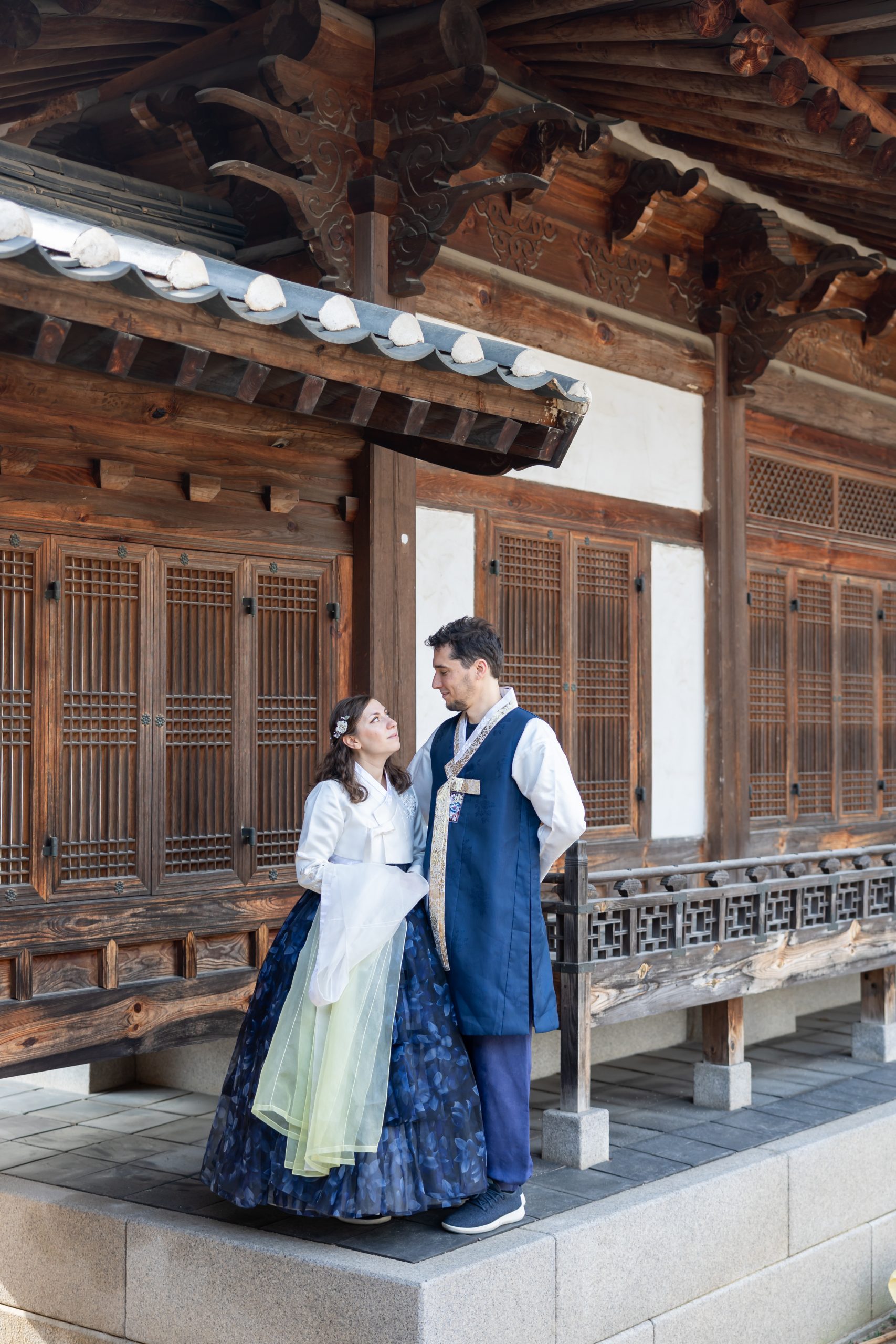
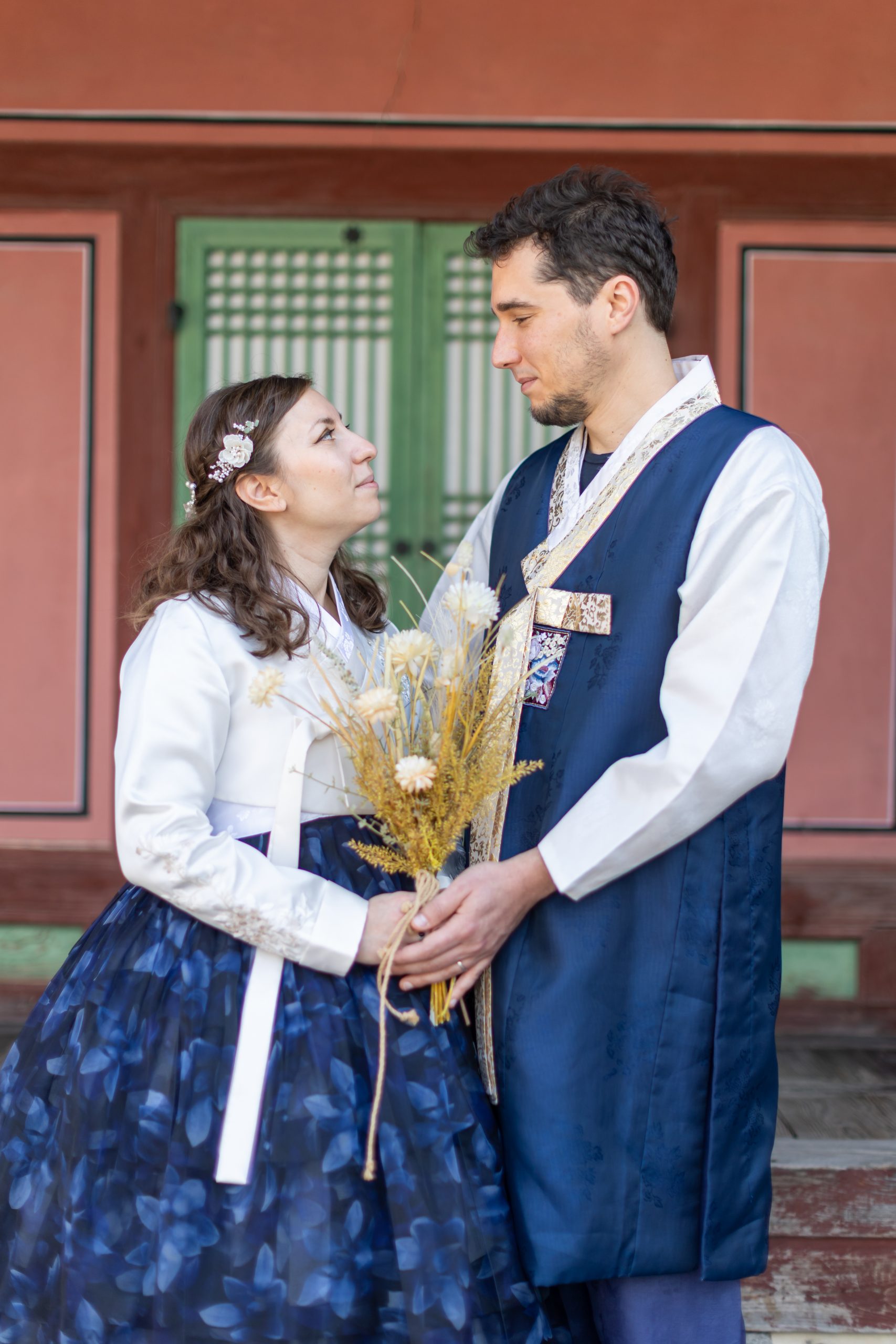
How to wear a Hanbok?
Wearing a Hanbok can be a bit tricky if you’re not familiar with it, but with a few simple steps, you’ll be able to wear it like a pro.
- Start by putting on the jeogori, which is the blouse-like top worn by both men and women. The jeogori should be worn with the collar in the front and the sleeves should be folded up to the elbow.
- For women, put on a traditional undergarment called a “sokchima” which is worn under the chima. This will help to hold the chima in place and give it a more traditional shape.
- Next, put on the chima or baji. The chima is the full skirt worn by women and the baji are the long, wide-legged pants worn by men. The waistband of the chima or baji should be worn at the natural waistline and should be tied with the ribbon provided.
- For men, put on the durumagi, a long, flowing coat. It should be worn over the jeogori and baji.
- Once you are dressed, adjust the Hanbok so that it fits comfortably and the hem of the skirt or pants falls to your ankle. Don’t worry, at the Hanbok rental store, someone can help you adjust if you need a little help. Staff is usually very kind and helpful.
- Finally, put on the traditional socks “gomusin” and shoes “gatchima”. If you are like me and are feeling uncomfortable about wearing rental shoes, you can just wear yours. Just note that they may be visible in some pictures.
Don’t be nervous, Hanbok rental shops will show you how to wear a Hanbok and will also help you to dress properly.
Once you are fully dressed, the staff will ask you how you want your hair done and what types of hair accessories you wish to wear. These normally cost a little extra. You will also be able to pick a handbag to complete the look.
You are now wearing a traditional Korean dress and are ready to explore Seoul for the best photo locations.
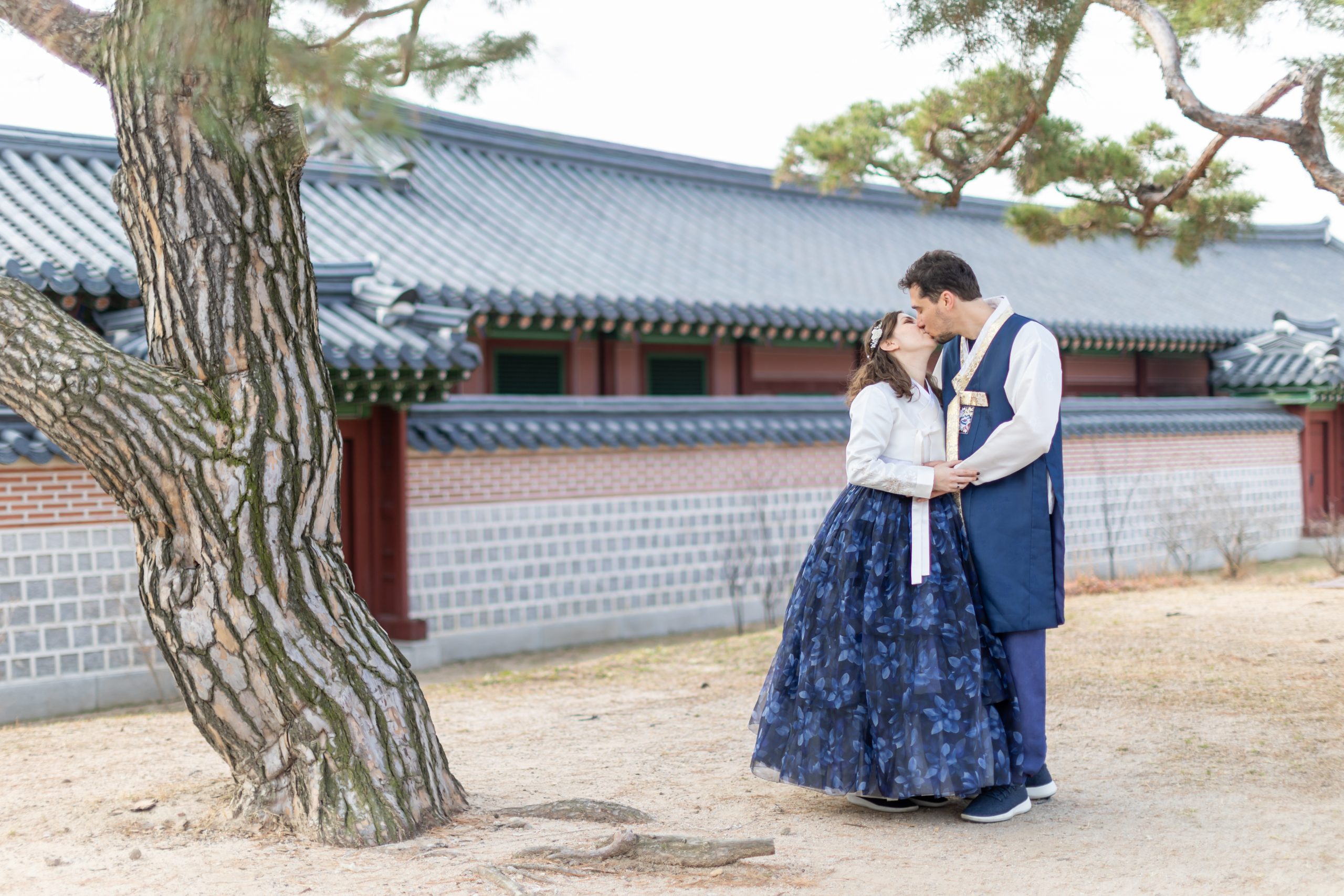
What do you wear under a hanbok?
You can wear normal, comfortable clothes under your hanbok. For foreigners, it is not necessary to wear traditional undergarments such as a sokchima or banyan.
If it’s cold outside, I recommend wearing your thermals underneath your Hanbok for both men and women. In the summer, wear a tshirt and your shorts.
You will have lockers at the rental shop and changing rooms.
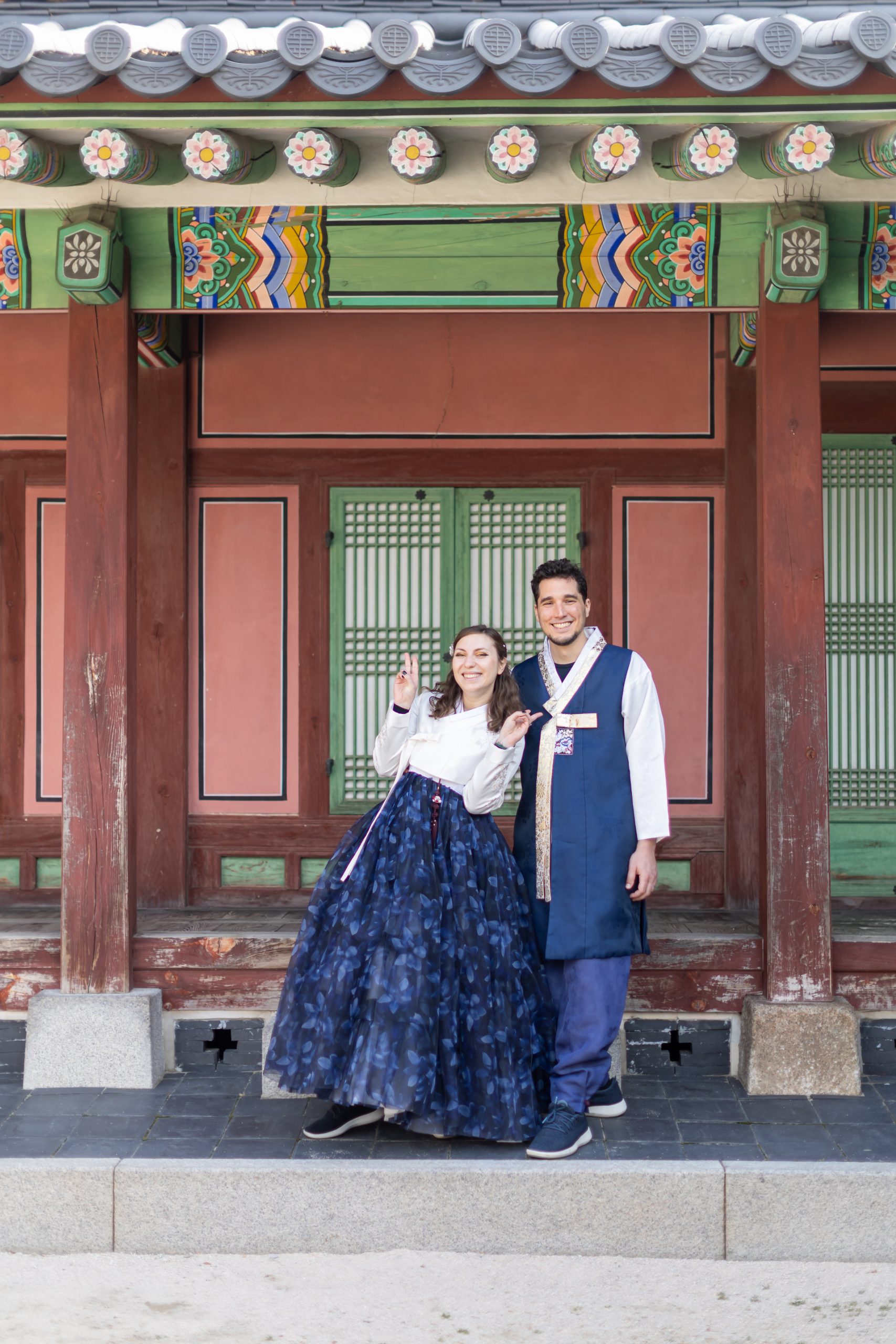
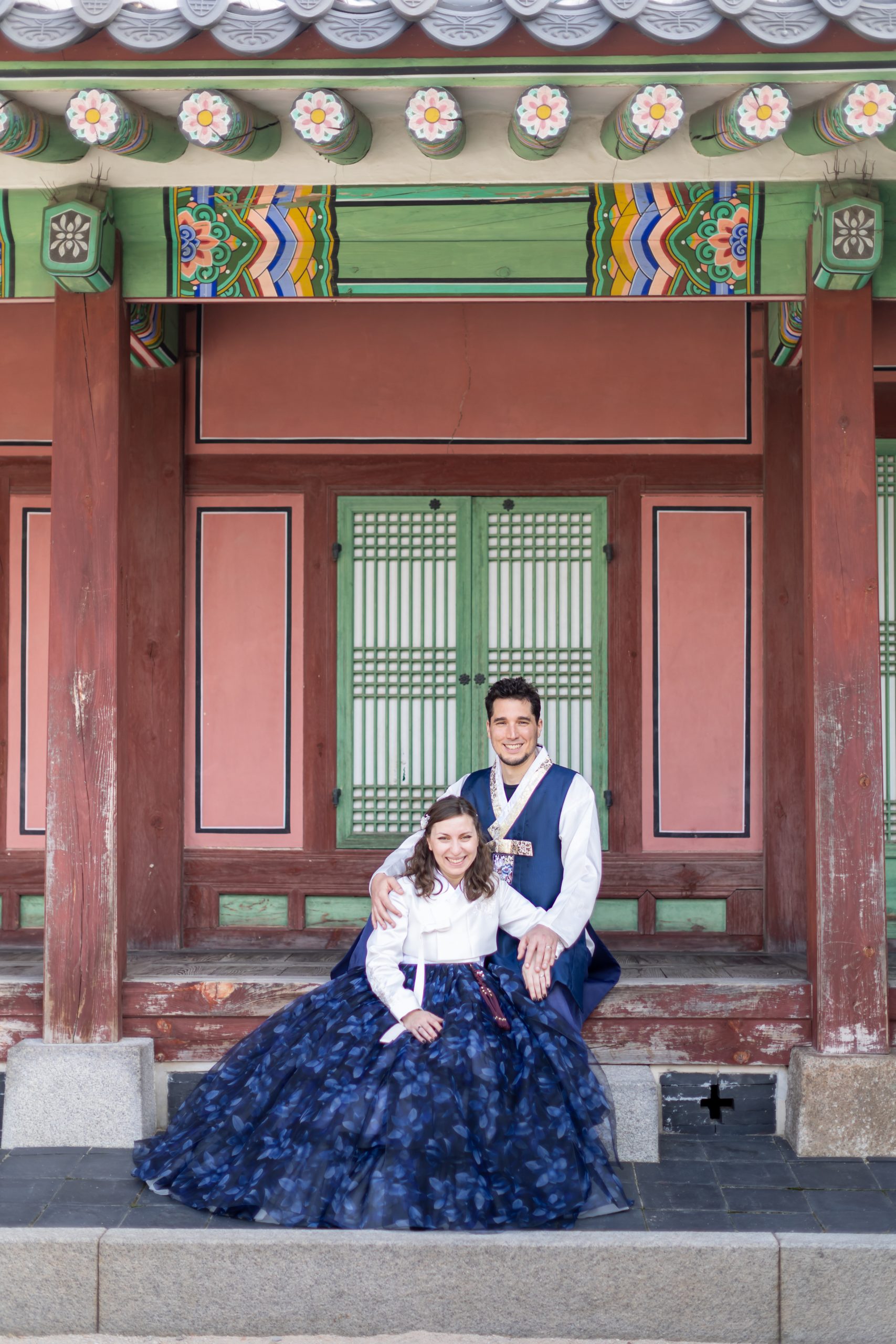
Beautiful sights for Hanbok photo shoots
There are many beautiful sights in South Korea that are perfect for Hanbok photo shoots. Some of the most popular include:
- Gyeongbokgung Palace: This is one of the most famous historical sites in Seoul and our favourite place for a Hanbok photoshoot. The palace is surrounded by beautiful gardens, traditional Korean architecture, and cultural landmarks. The pond was perfect for romantic photos as well.
- Bukchon Hanok Village: This traditional Korean village is located in the heart of Seoul and is made up of dozens of traditional Korean houses, or “hanok.” It’s a great place to take photos of Hanbok in a traditional Korean setting. Just note that it can get busy during peak tourist times so you might want to arrive as early as possible.
- Namsan Tower: Also known as the Seoul Tower, this landmark offers a beautiful panoramic view of the city. The observation deck is a great place to take photos of Hanbok with the cityscape in the background.
- Cheonggyecheon Stream: This stream runs through the heart of Seoul. It’s a great place to take photos of Hanbok in a natural setting. It will give some of your photos a more relaxed vibe.
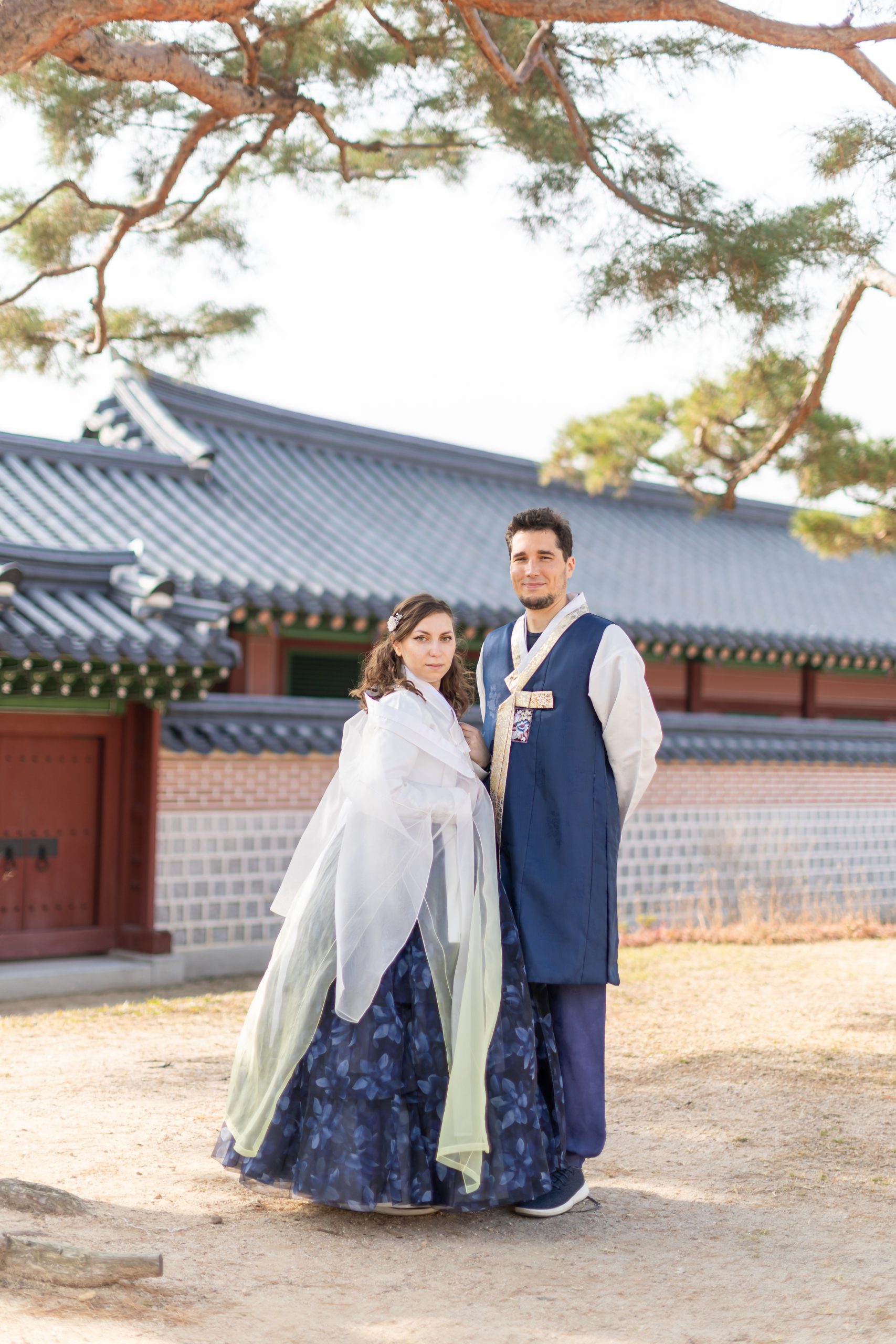
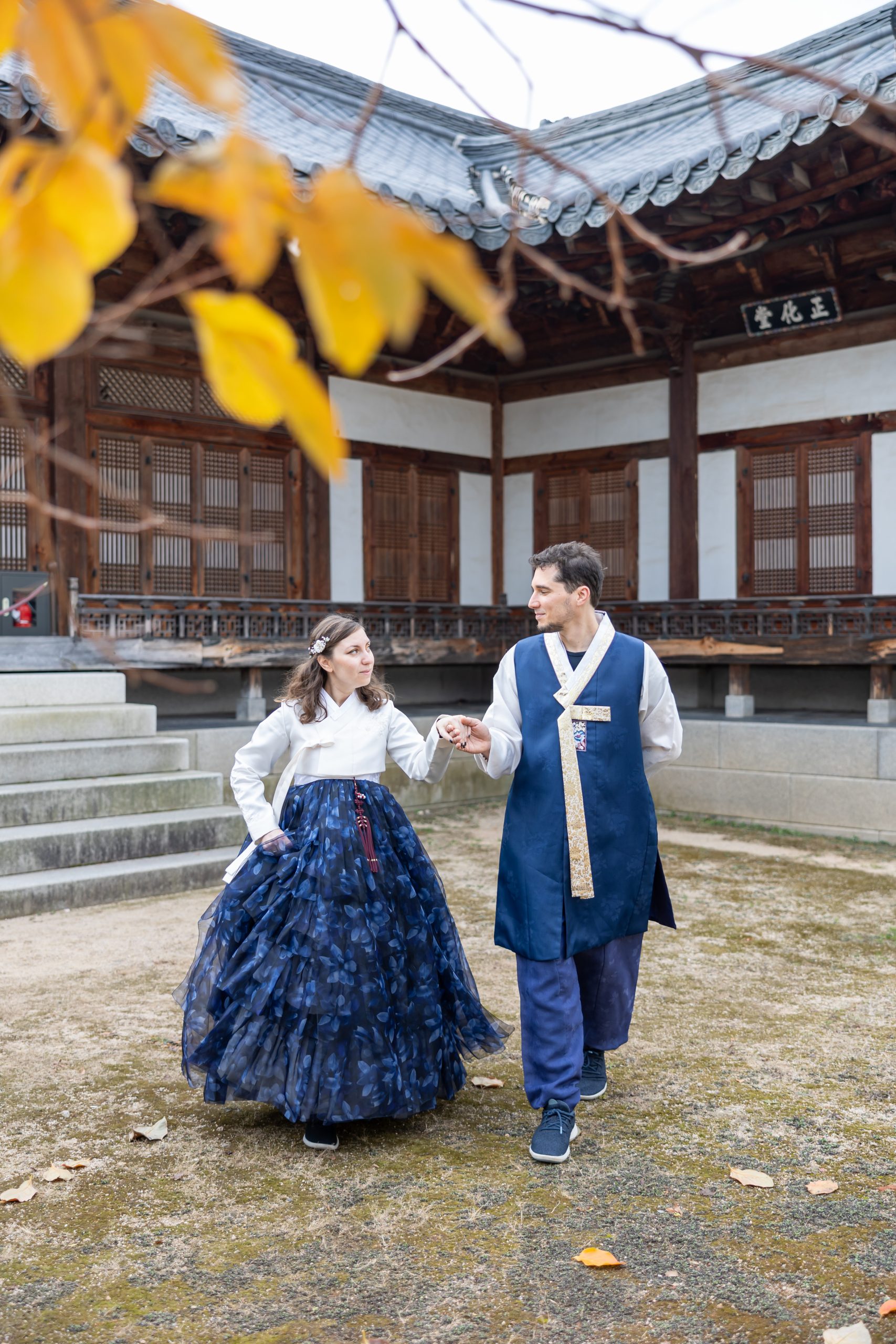
Is it okay for foreigners to wear hanbok?
Yes, it is completely fine for foreigners to wear a Hanbok. Many tourists visiting South Korea choose to rent or purchase a Hanbok as a way to experience traditional Korean culture and make lasting memories. When wearing a Hanbok, respect the traditional significance of the garment. Familiarize yourself with the customs and etiquette of the place where you are wearing it.
Koreans generally have a positive attitude towards foreigners wearing Hanbok. Many Koreans see it as a way for tourists to learn about and appreciate traditional Korean culture. Some may view it as a form of cultural exchange and a way for foreigners to connect with the local culture.

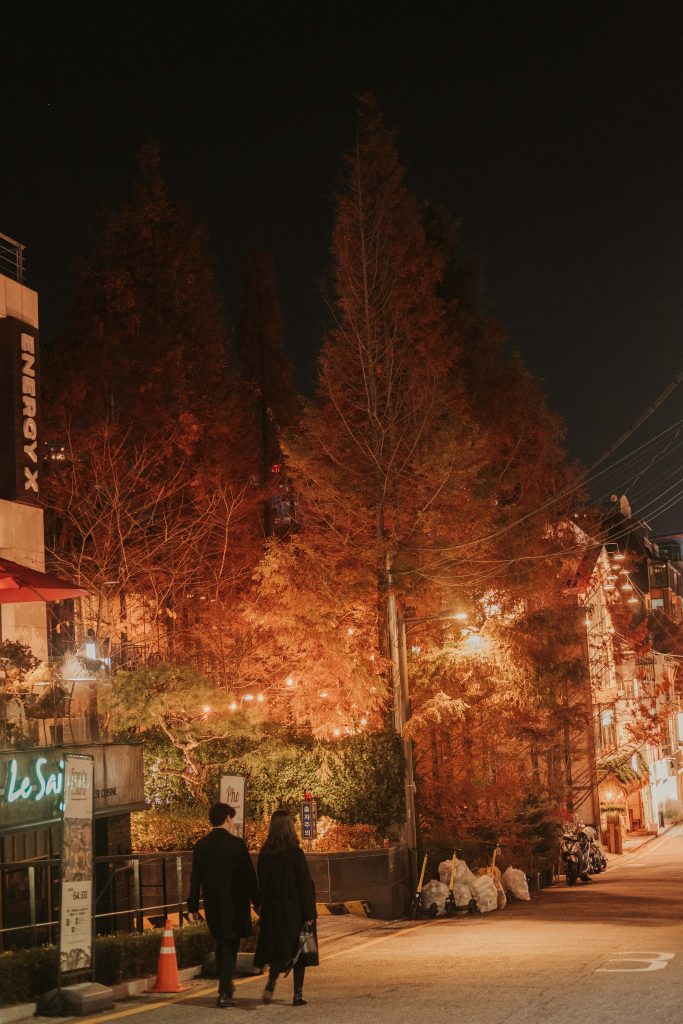
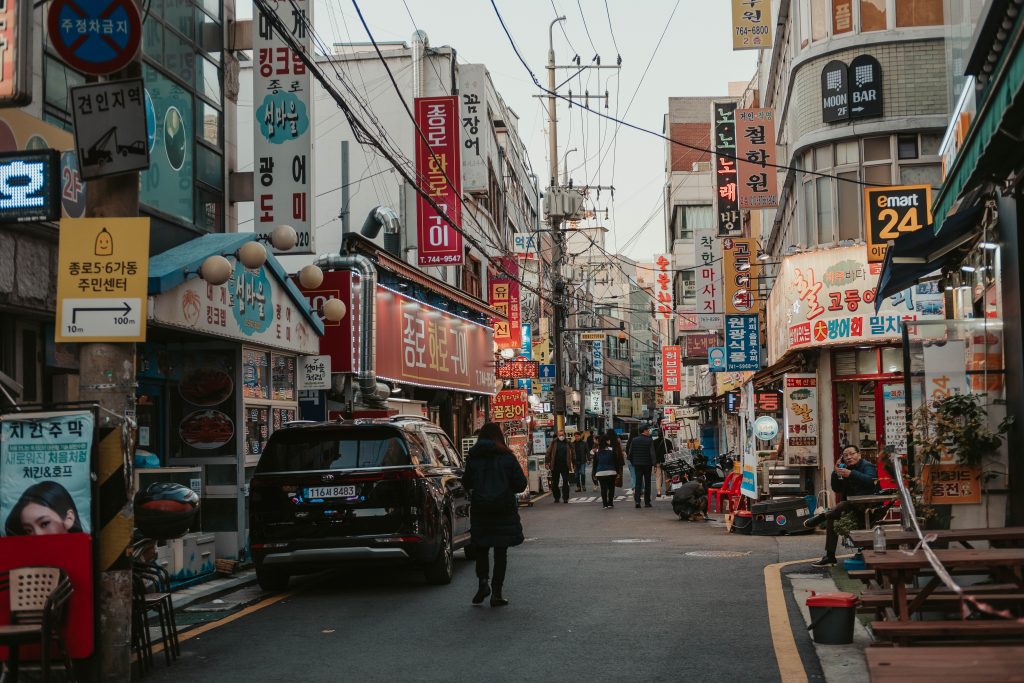
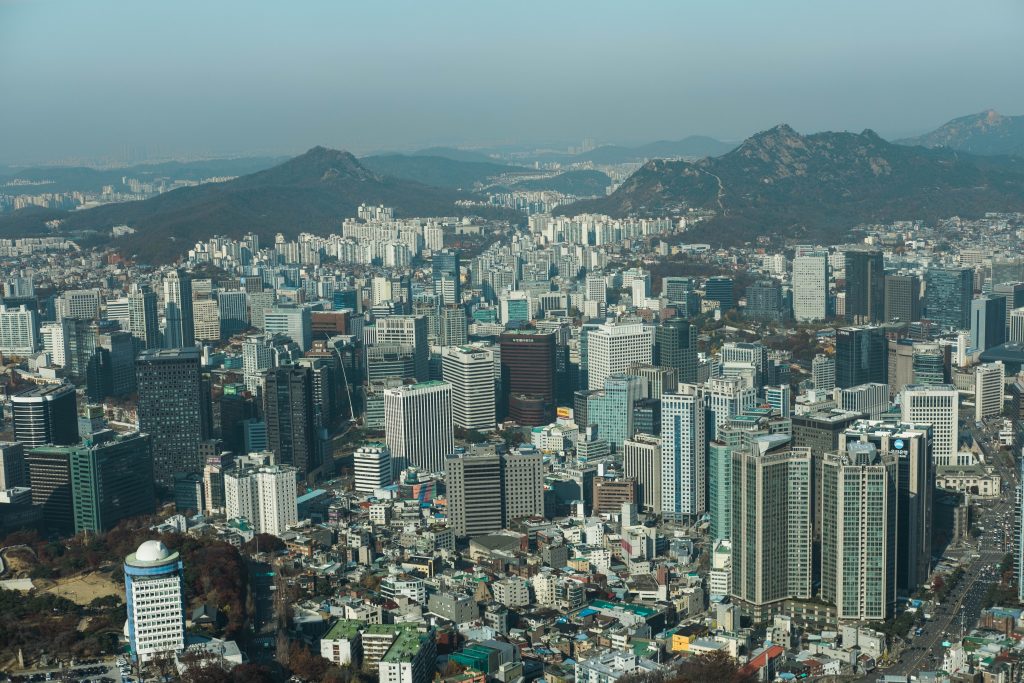
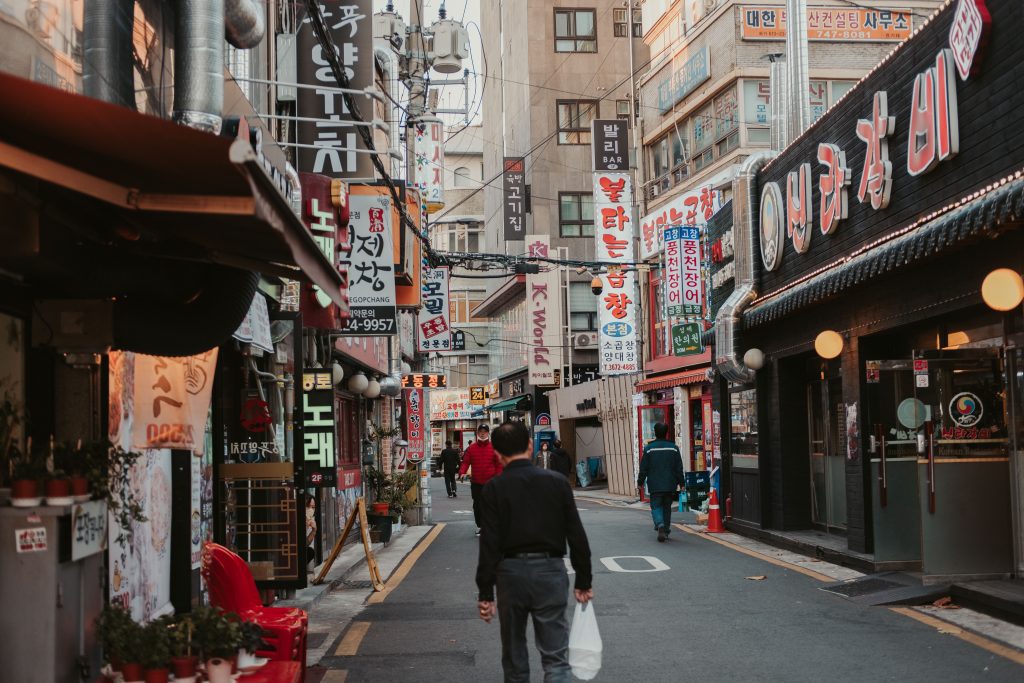


Leave a Reply